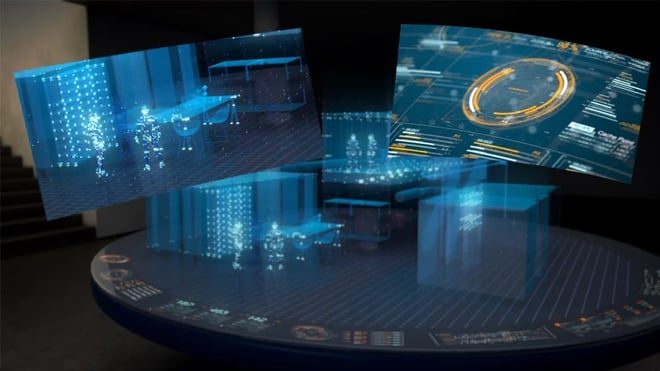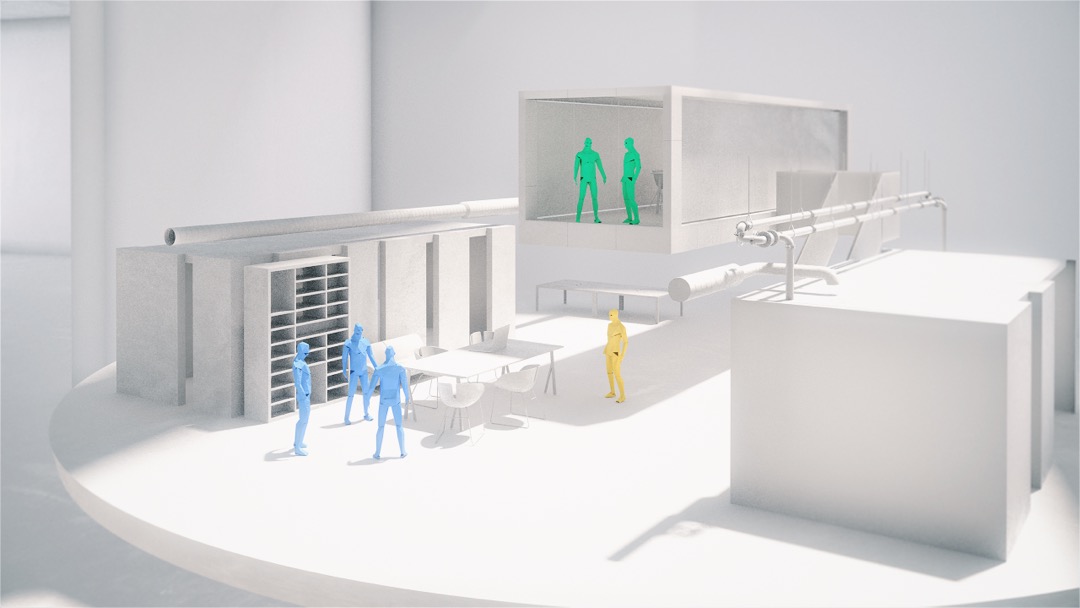Today, virtual reality is in the perfect position to address the challenges of the training industry. VR presents us with a unique opportunity to reduce costs, minimise risk and improve knowledge transfer and retention. In the second article of the Extended Mind Series, we look at how virtual reality is disrupting learning and development today.
Experience Learning with VR
People and organisations have to continuously learn. Instead of a sequence of jobs, 21st-century careers will be more like a series of developmental experiences focused on lifelong learning. And This is not some utopian and distant future; this change is already happening, and leaders need to foster a culture of development and adaptability to keep up.
Immersive technologies - namely virtual, augmented and mixed reality are at the forefront of this transformation. By rewriting the way people connect - with information, experiences, and each other - they can lead enterprise towards higher and higher standards of performance.

Specifically, here’s how virtual reality is disrupting Learning and Development:
- Standardise and deliver training at scale: so everyone can get the same quality of training, regardless of where they are or their role.
- Reduce costs and deliver a better return on investment: so that companies don’t spend as much on travel or facility downtime when training large teams.
- Reduce health and safety risks: so that people who deal with high risk situations can learn with simulations, and gain practical experience without the danger.
- Improve engagement and learning standards: VR eliminates the distance not just between student and teacher, but also concept and practice.
- Companies can change their culture by influencing behaviour and use VR’s high retention rates to habituate the change.
If an image is worth 1000 words, how many words is an experience worth?
Training & Development Today
In a recent article, we saw how VR training fits into one of three models: Skill-based, knowledge-based and behavioural. Here is what each of these models looks like as they’re applied today:
Skills-based training
Jose has been hired as a Maintenance Operator on an offshore rig for a big oil company. It’s a high-risk job, so he’ll need to learn and follow strict health and safety codes to operate machinery and maintain equipment. Before he can set foot on the oil rig, Jose visits the oil company’s training centre so he can be trained in a simulation on a virtual rig. He puts on the VR headset and starts the tutorial.
Essentially, Jose receives an explanation, then a prompt and completes an action. If he makes a mistake, he hears the explanation again, and repeats the action until he does it correctly. Jose uses his body as a natural interface to interact with objects in the simulation, which stimulates muscle memory.
Jose’s story is inspired by a solution developed by EON Reality for the Institute of Technical Education’s Marine and Offshore Technology programme.
Knowledge-based training
Alberta is the Head of Innovation for a multinational manufacturing company, and needs to catch up on the latest LEAN manufacturing practices. Rather than travelling abroad on an intensive course for three days, she plugs in her company VR headset into her laptop, and logs into the training platform. There, she can access an entire catalogue of case studies, animated scenarios, and interactive exercises that bring her up to speed.
Every week, Alberta takes between one or two hours on the course, explores an entire learning ecosystem with other executives, and tests her knowledge of the content she studied - in VR, online and offline. For 12 weeks, Alberta learns and reflects on what she’s learned, and is able to directly apply these learnings in her own department.
Alberta’s story is inspired by the The Leadership Network’s Gemba, the learning and development platform developed by Somewhere Else.

Behavioral Training
Ellie was recently promoted to Customer Service Representative for an international retailer. Her new roles involves a lot of face time with customers, and the ability to deal with unexpected situations. Ellie is worried that she lacks the confidence to think on her feet. Luckily, her company has a VR training programme that teaches new reps the best ways to deal with unexpected situations or unpredictable customers.
Ellie goes through a series of scenarios that play out as interactive 360-degree videos, and when she completes each one, she gains more confidence. As the difficulty increases, so does her anxiety. However, with each successful attempt, she reacts more calmly and professionally. From conflict resolution to better standards of service, Ellie’s learning experiences are only limited by the content that she can access.
Ellie’s story is inspired by Walmart’s VR Training Academies, which consists of scenario-based programmes developed by STRIVR for Walmart to use at scale across the United States.
Digital Transformation Tomorrow
With the rise of Big Data, Artificial Intelligence (AI) and Internet of Things (IoT), immersive technologies have yet to reveal their true potential. The more emerging technologies integrate, the more engaging and effective learning becomes. In this vision of the future, training isn’t restricted to a few hours a week. Mixed reality gives us an head-mounted display that layers virtual objects onto the physical world. With relevant, timely and informative data, let’s consider how Jose, Alberta and Ellie can learn continuously, while they carry out their everyday tasks.
Jose has worked on the offshore oil rig for a few years now, and now uses a mixed reality headset that’s built into his hard-hat. It overlays information on relevant objects that are in his field of view to guide him through the steps of a new maintenance routine that he has to perform. Technical teams on the mainland produce and update the information that Jose sees, and can get a live feed of what he sees if he struggles with any issues.
All the equipment on the rig is connected to the central mainframe, which receives regular status updates and regulates the flow of information. Jose only gets the relevant and dynamic content that will help him complete his task. In the end, Jose is one with the oil rig, his body integrates into the architecture, which responds to his actions in real time.

Alberta now uses a mixed reality headset for everything: to process numerical and visual information, visualise complex problems across her organisation and familiarise herself with emerging concepts in her field. She is able to bridge the gap between the real manufacturing environment and the data she has about it. She can run simulations, bring colleagues in virtually to inspect her environment and make AI-assisted real-time decisions on how to optimise the manufacturing process. The learning and the application thereof have become simultaneous
Ellie needs to constantly adapt to new products and ways of improving customer service. Instead of learning with pre-scripted experiences, she wears her virtual reality headset and launches a simulation populated by conversing AI characters. With the real-time data collected by the company, simulated customers based on real current situations come to Ellie with randomised problems to solve, and give her realistic feedback on her performance. Ellie’s performance data is saved, so that the AI can adjust the learning curve with each training session.
This future is already upon us. VR is already demonstrating serious return on investment and the value immersive tech adds to L&D is clear. Kallidus estimates that 91% of L&D professionals plan to use VR in their organisations, with up to 32% of people saying that they would be using it within three years.
Companies are changing fast. So is learning. Will you be left behind?

